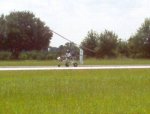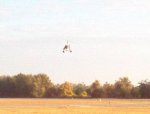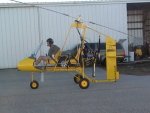GyroDoug
Active Member
- Joined
- Sep 23, 2005
- Messages
- 3,664
- Location
- Layton, UT.
- Aircraft
- Butterfly Super Sky Cycle
- Total Flight Time
- 15
I agree with all that's been said, and I am presently and willingly simply flying the mains... There's so much to learn and it was truely a foolish mistake. I realize now that the gyro deserves the respect of a helicopter... I appreciate the serious concern. Thank-you.
Brook,
We all make mistakes but not everyone learns from their mistakes. You seem to have the proper attitude and a willingness to be taught and learn from your mistakes. I think that says loads about your character. I congratulate you on surviving your first excursion from the ground solo in a Gyro. I am confidant you will become a good (and especially safe) gyro pilot. Keep up the good work and always remember you are an ambassador of our sport, whether you realize it or not, so always be a good one.
Gyro Doug






